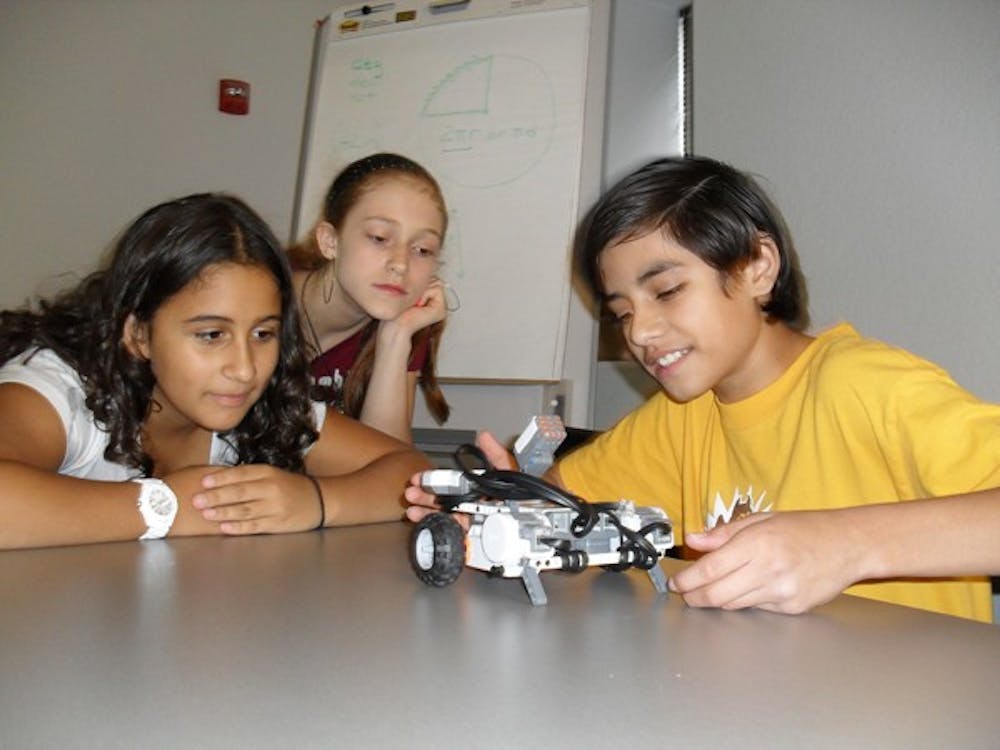Middle school students huddled around their Mac laptops, intensely discussing the calibration of their Lego robots Friday morning at the Gary K. Herberger Young Scholars Academy on the West campus.
New students at the accelerated academy that opened Aug. 15 have been introduced to a new scholastic environment.
Eric Slosky, a 7th grader, said he was searching for the right school to attend and went to seven other schools before coming to this academy.
“I like to apply concepts to the real world; I love this program,” Slosky said.
Bill Johnson, a retired engineer from Motorola, facilitated the Aug. 2 class on problem solving, computer programming and math. He taught the class using Lego robots.
The academy’s inaugural class of 26 gifted students were selected from an applicant pool of more than 50, said Kim Lansdowne, the executive director of the school.
Gary and Jeanne Herberger helped established the academy, and yearly tuition is $7,500, Lansdowne said.
This year the school was able to offer four scholarships although more students qualified, she said.
The school will accept new students until December.
Lansdowne said the school is so small they are able to offer very individualized education and coming in late wouldn’t affect the student’s education.
The academy is part of the Mary Lou Fulton Teachers College and one of the first to take advantage of the Move on When Ready bill that passed last year, she said.
This bill allows school districts and charter schools across the state to award students a high school diploma as early as the end of their sophomore years.
The Herberger Academy students will start high school curriculum in spring 2012, she said. During their five years at the academy the students can earn up to 45 college credits, she said.
Right now the school has only two full-time teachers and they will add two more in spring 2012. The students range in age from 9 to 14, but Lansdowne said age is insignificant when it comes to gifted kids and that it is more important for them to find a peer group with common interests.
“Every highly gifted kid has some social challenges,” Lansdowne said.
The school’s psychologist, Robyn McKay, said she also teaches a positive psychology program, which helps students build friendships.
Mikol Aspinwall, 9, is the youngest of the class and he said sometimes he is uncomfortable.
“Sometimes it makes me feel a little scared,” Aspinwall said.
Lansdowne said the school planned a camping trip in late August to help students get to know each other.
Aspinwall and Slosky both said they had a good time.
“We are all very competitive,” Slosky said. “But camping showed we can all have fun together and become a community.”
The robotics lesson is part of a weekly series, Lansdowne said. She invites guests to teach an interactive project to the class. She said the West campus has been a great resource for finding instructors. She said she is particularly excited for Chad Johnson, an assistant professor at ASU, to bring his community of black widows to the school around Halloween.
Katie Gibson, 13, said she prefers this type of learning compared to the three schools she attended previously.
“This school prepares you for life and not just the test that’s coming up,” she said.
Reach the reporter at mshinn@asu.edu





